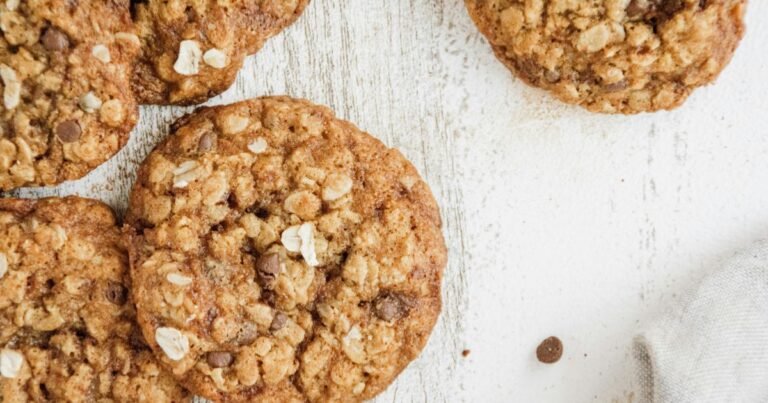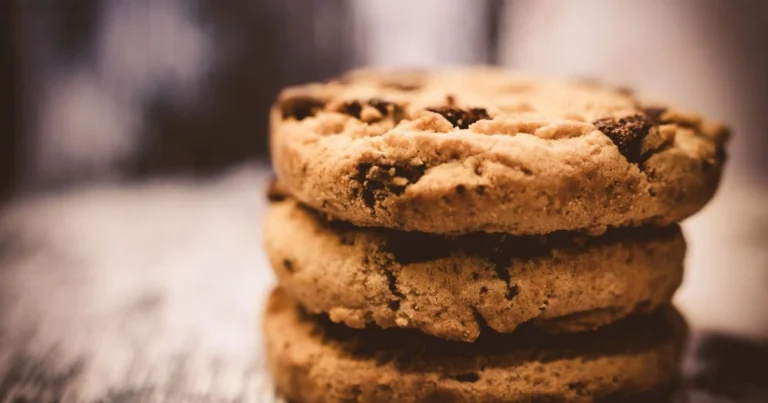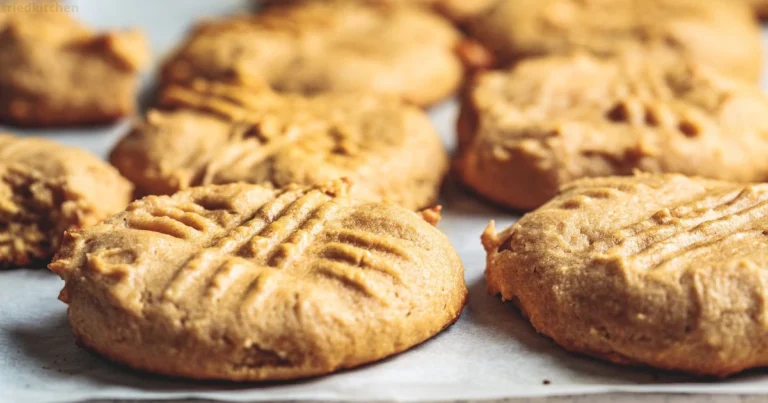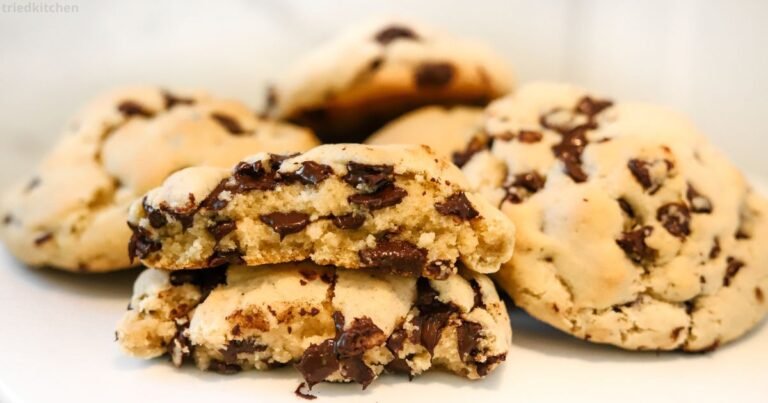How to Make Cottage Cheese Cookies for a High-Protein Treat
The Unexpected Secret to Your New Favorite Snack
Have you ever found yourself yearning for a sweet delight that doesn’t derail your nutritional objectives? Perhaps you’ve wrestled with the dilemma of satisfying a craving without compromising your protein intake. Many of us have navigated this familiar territory, balancing desires with dietary aims, often feeling compelled to choose one over the other. But what if there existed a straightforward, delightful solution that seamlessly merged both worlds? Prepare to be genuinely surprised, thoroughly delighted, and quite possibly, completely captivated. Today, we’re embarking on an exploration into the remarkable domain of cottage cheese cookies, an exceptionally innovative treat poised to become your staple for a high-protein, supremely gratifying indulgence. Get ready to revolutionize your approach to snacking!
Why Cottage Cheese in Cookies? Unveiling the Protein Powerhouse
You might raise an eyebrow at the thought of cottage cheese making an appearance in your cookie dough. It’s a natural reaction. Yet, this unassuming dairy product holds the key to transforming your cookie experience from merely enjoyable to remarkably beneficial. Let’s delve into why incorporating cottage cheese into your cookies is a genuinely brilliant move.
The Nutritional Benefits of Cottage Cheese
When you choose to include cottage cheese in your baking, you’re not just adding a secret ingredient; you’re infusing your treats with a wealth of nutritional advantages.
- High-Protein Content: One of the foremost reasons to embrace cottage cheese in your cookies is its impressive protein profile. As you likely know, protein is absolutely vital for muscle repair, fostering a sense of fullness that helps manage cravings, and supporting your overall physiological well-being. By utilizing cottage cheese, you significantly elevate the protein content of your cookies, transforming them from a simple carbohydrate indulgence into a more balanced and beneficial snack. This makes them an excellent choice for a post-workout recovery bite or a mid-afternoon pick-me-up when you require sustained energy.
- Low in Fat (Depending on Type): Your control over the fat content of your cookies increases with cottage cheese. Whether you opt for full-fat, low-fat, or non-fat varieties, you have the flexibility to align the cookie’s richness with your personal dietary preferences. This adaptability is a huge advantage, allowing you to tailor your high-protein treat precisely to your needs.
- Source of Essential Nutrients: Beyond protein, cottage cheese provides valuable micronutrients. It’s a respectable source of calcium, crucial for robust bones and teeth. You’ll also find phosphorus, which plays a role in energy metabolism, and various B vitamins, essential for nerve function and converting food into energy. These added benefits mean your delicious cookies are quietly contributing to your daily nutrient intake.
- Texture and Moisture: Here’s where the magic truly unfolds. Cottage cheese, despite its initial appearance, works wonders for the texture of your baked goods. It imparts a unique, incredibly tender quality to the cookies. The moisture content within the cottage cheese helps to keep your cookies delightfully soft and moist, often reducing the need for excessive amounts of butter or oil, which can be a game-changer for those monitoring their fat intake without sacrificing indulgence.
Debunking the Myths: Taste and Texture Concerns
Now, let’s address the elephant in the room: “Will my cookies taste like… cheese?” It’s a completely valid concern, and one you’re likely pondering. Allow us to put your mind at ease.
The truth is, the distinctive cheese flavor of cottage cheese is virtually undetectable once it’s baked into cookies. The other ingredients – the sweeteners, vanilla, and any delightful add-ins like chocolate chips – beautifully mask and blend with the cottage cheese, transforming its unique properties into something entirely new. What emerges from your oven isn’t a savory cheese pastry, but rather a cookie that boasts a wonderfully soft, remarkably chewy, and almost cake-like consistency. Imagine a cookie that’s delightfully tender and melts in your mouth – that’s the kind of experience you’re in for. Your friends and family will simply marvel at the deliciousness, likely without ever suspecting the secret ingredient.
Getting Started: Essential Ingredients for High-Protein Cottage Cheese Cookies
Embarking on your journey to create these phenomenal high-protein treats requires a few fundamental components, many of which you likely already have stashed away in your kitchen.
Pantry Staples You’ll Need
Before you even consider the star ingredient, let’s ensure your pantry is equipped with the foundational elements for nearly any cookie recipe.
- Flour: You have options here. All-purpose flour is a common choice and will yield a consistently good result. If you’re aiming for a gluten-free version or wish to experiment with different textures, oat flour or almond flour are excellent alternatives. Just remember that altering the type of flour might require slight adjustments to the liquid content or baking time, so be prepared for a bit of experimentation.
- Sweeteners: The sweetness of your cookies can be tailored to your preference. Granulated sugar provides a classic sweetness, while brown sugar adds a deeper, molasses-rich flavor and contributes to a chewier texture. For natural alternatives, maple syrup or honey can be used, though these might necessitate minor adjustments to the overall liquid in your recipe. If you’re managing sugar intake, sugar substitutes designed for baking are also viable.
- Leavening Agents: These are the unsung heroes that give your cookies their delightful lift and tender crumb. You’ll typically need both baking powder and baking soda. Baking soda, in particular, will react with the slight acidity in the cottage cheese, creating air pockets that contribute to a light and fluffy cookie.
- Flavor Enhancers: Don’t underestimate the power of these seemingly minor additions. Vanilla extract is indispensable for imparting that universally loved, warm, and inviting cookie aroma and taste. A pinch of salt is also critical; it doesn’t make your cookies taste salty but rather amplifies the sweetness and balances the overall flavor profile, preventing them from tasting flat.
The Star Ingredient: Cottage Cheese
Now, for the ingredient that makes these cookies truly unique and highly beneficial for your protein goals.
- Type of Cottage Cheese: The type of cottage cheese you select can subtly influence the final outcome of your cookies. Full-fat cottage cheese will contribute to a richer, perhaps slightly more decadent cookie. Low-fat varieties are excellent for keeping the calorie count down while still delivering on protein and moisture. Non-fat options are also viable. Small curd cottage cheese is often preferred for its smoother texture when blended into the dough, but large curd can also work; just anticipate that you might need to process it a bit more to achieve a uniform consistency.
- Preparation: While often not strictly necessary, some bakers choose to lightly drain their cottage cheese before incorporating it, especially if they prefer a slightly drier, more structured cookie. If you desire a softer, cakier cookie, using it straight from the tub without draining is perfectly acceptable and often recommended. Experiment to discover your preference!
Optional High-Protein Boosters and Flavor Add-ins
This is where your creativity truly shines! While the base recipe is fantastic on its own, these additions allow you to personalize your cottage cheese cookies and amplify their nutritional value or simply their deliciousness.
- Protein Powder: For an even more significant protein punch, consider adding a scoop of unflavored or vanilla protein powder to your dry ingredients. Be mindful of the quantity, as too much can alter the texture of your cookies, making them a bit dry. A good starting point is usually a quarter to half a scoop per batch, adjusting as you learn.
- Chocolate Chips: A timeless classic! Whether you prefer dark chocolate, milk chocolate, or sugar-free options, chocolate chips are always a welcome addition. They melt beautifully, creating pockets of gooey delight within your high-protein treat.
- Nuts and Seeds: For added texture, healthy fats, and a nutritional boost, incorporate chopped walnuts, pecans, or even smaller seeds like chia seeds or flax seeds. These can provide a satisfying crunch and additional fiber.
- Dried Fruit: Sweet and chewy, dried fruits like raisins, cranberries, or finely chopped apricots can add natural sweetness and a burst of flavor.
- Spices: Elevate your cookie game with warm spices. Cinnamon, nutmeg, and a touch of ginger can transform the flavor profile, making your cottage cheese cookies incredibly aromatic and comforting.
- Citrus Zest: For a brighter, fresher taste, consider adding lemon or orange zest. The oils in the zest provide a vibrant aromatic lift that perfectly complements the other flavors.
The Recipe: Step-by-Step Guide to Perfect Cottage Cheese Cookies
You’ve gathered your ingredients; now let’s roll up your sleeves and get baking! This straightforward process will lead you to a batch of delightfully high-protein cookies.
Tools and Equipment
Before you begin mixing, ensure you have these common kitchen tools at your disposal:
- Mixing bowls: At least one large bowl for wet ingredients and a medium one for dry.
- Whisk or electric mixer: A whisk works perfectly for most steps, but an electric mixer can expedite the process and ensure thorough blending.
- Measuring cups and spoons: Precision is key in baking for consistent results.
- Baking sheets: You’ll likely need two to bake a full batch efficiently.
- Parchment paper or silicone baking mats: These prevent sticking and make cleanup a breeze.
- Cookie scoop or two spoons: For portioning out your dough evenly, ensuring uniform baking.
Ingredients for Delicious Cottage Cheese Cookies
Here’s the breakdown of what you’ll need, presented in an easy-to-follow table for your convenience:
| Ingredient | Quantity | Notes |
| All-purpose flour | 1 ½ cups | Provides structure; for a chewier cookie, consider slightly less. |
| Cottage cheese (low-fat) | 1 cup | Small curd is generally preferred for smoother texture. |
| Granulated sugar | ½ cup | Adjust to your desired level of sweetness. |
| Brown sugar (packed) | ¼ cup | Adds moisture, a hint of molasses flavor, and chewiness. |
| Egg | 1 large | Essential for binding and structure; ideally at room temperature. |
| Vanilla extract | 1 teaspoon | Elevates the overall flavor profile. |
| Baking powder | 1 teaspoon | Contributes to the cookie’s rise and tender crumb. |
| Baking soda | ½ teaspoon | Reacts with the acidity in cottage cheese for optimal lift. |
| Salt | ¼ teaspoon | Balances sweetness and enhances other flavors. |
| Butter (unsalted, melted) | ½ cup | Adds richness and helps bind the ingredients together. |
| Chocolate chips | ¾ cup | Optional, but highly recommended for bursts of sweetness. |
Instructions for Baking Cottage Cheese Cookies
Follow these steps carefully, and you’ll soon be enjoying your freshly baked high-protein treats.
- Preheat and Prep: Begin by preheating your oven to 375°F (190°C). As your oven warms, take the time to prepare your baking sheets. Line them with parchment paper or silicone baking mats. This crucial step ensures your cottage cheese cookies won’t stick and makes cleanup remarkably easy.
- Wet Ingredients: In a large mixing bowl, combine your melted unsalted butter, granulated sugar, and packed brown sugar. Whisk these ingredients together until they are thoroughly blended and appear smooth. Next, crack in your large egg and add the vanilla extract. Continue whisking until the mixture is well incorporated and creamy.
- Cottage Cheese Addition: Now for the star! Gently fold the cottage cheese into your wet ingredient mixture. Stir until it is mostly combined. Don’t worry if you notice a few small lumps of cottage cheese; they will practically vanish during the baking process, melting into the dough to contribute moisture and tenderness.
- Dry Ingredients: In a separate, medium-sized bowl, whisk together all your dry components: the all-purpose flour, baking powder, baking soda, and salt. Whisk them thoroughly to ensure the leavening agents are evenly distributed throughout the flour.
- Combine: It’s time to bring everything together. Gradually add the dry ingredients mixture to the wet ingredients in the large bowl. Mix until the ingredients are just combined. This is a critical point: avoid overmixing. Overmixing can develop the gluten in the flour too much, resulting in tougher, less tender cookies. Stop mixing as soon as no streaks of dry flour remain.
- Add-ins (Optional): If you’re opting for additional delights like chocolate chips, nuts, or dried fruit, gently fold them into the dough now. Distribute them evenly throughout the mixture with a spatula or spoon.
- Scoop and Bake: Using a cookie scoop (or two spoons), drop rounded tablespoons of your cottage cheese cookie dough onto the prepared baking sheets. Ensure you leave approximately 2 inches of space between each cookie to allow for spreading during baking.
- Bake: Place your baking sheets in the preheated oven. Bake for approximately 10 to 14 minutes. The exact baking time can vary depending on your oven and the size of your cookies. You’ll know they’re ready when the edges appear lightly golden brown and the centers are set, no longer appearing wet or overly soft.
- Cool: Once baked, carefully remove the cookies from the oven. Allow them to cool on the baking sheets for a few minutes. This brief cooling period helps them firm up before you attempt to move them. After a few minutes, transfer the cottage cheese cookies to a wire rack to cool completely. This prevents the bottoms from becoming soggy and ensures a perfectly set cookie.
Variations and Customizations: Exploring Your Cottage Cheese Cookie Creativity
The beauty of cottage cheese cookies lies in their adaptability. Once you’ve mastered the basic recipe, you have an open invitation to experiment and personalize them to your heart’s content.
Sweet and Savory Options
While primarily a sweet treat, the base can be adapted in surprising ways.
- Lemon Poppy Seed Cottage Cheese Cookies: Infuse your dough with the bright zest of lemon and the subtle crunch of poppy seeds. This combination offers a refreshing, vibrant flavor profile.
- Peanut Butter Chocolate Chip: For a rich, comforting twist, incorporate a generous dollop of peanut butter into your dough, along with the classic chocolate chips. The nutty flavor pairs beautifully with the subtle tang from the cottage cheese.
- Oatmeal Raisin: Give the timeless oatmeal raisin cookie a high-protein makeover. The cottage cheese will keep them wonderfully moist and chewy, while the oats and raisins provide classic texture and sweetness.
- Spiced Apple: Think autumn flavors! Grated apple, a pinch of cinnamon, and a dash of nutmeg can create a comforting, wholesome cookie perfect for cooler weather.
Catering to Dietary Needs
One of the great advantages of baking at home is the ability to adjust recipes to suit specific dietary requirements.
- Gluten-Free Cottage Cheese Cookies: Easily convert this recipe to be gluten-free by swapping all-purpose flour for almond flour or oat flour. Remember that gluten-free flours absorb liquids differently, so you might need to slightly adjust the amount of cottage cheese or add a touch more liquid (like milk or a dairy-free alternative) if the dough seems too dry.
- Lower Sugar Options: If you’re aiming to reduce your sugar intake, you can certainly experiment with sugar substitutes designed for baking. Additionally, using natural sweeteners like a smaller amount of maple syrup or honey, or relying more on the natural sweetness of dried fruits, can also help cut down on refined sugars.
- Dairy-Free Alternatives: While traditional cottage cheese is dairy, the market for dairy-free alternatives is growing. If you find a dairy-free cottage cheese substitute, you could experiment with it. However, be aware that its texture and moisture content might differ, potentially requiring slight adjustments to the recipe.
Storing and Enjoying Your High-Protein Cottage Cheese Cookies
Once your kitchen is filled with the irresistible aroma of freshly baked cottage cheese cookies, you’ll want to ensure you can enjoy them for as long as possible. Proper storage is key to maintaining their freshness and deliciousness.
Best Practices for Freshness
- Airtight Container: For short-term enjoyment, your cottage cheese cookies will remain delightfully fresh when stored in an airtight container at room temperature. They should keep well for about 2-3 days this way. The airtight seal prevents them from drying out and maintains their tender texture.
- Refrigeration: Because of the cottage cheese content, which is a dairy product, extending the freshness of your cookies is best achieved through refrigeration. Placing them in an airtight container in your refrigerator can prolong their deliciousness for up to a week. This is particularly recommended if your home is warm or humid.
- Freezing: Planning ahead or simply want a stash of high-protein cottage cheese cookies ready whenever a craving strikes? Freezing is an excellent option. Once your cookies have completely cooled, arrange them in a single layer on a baking sheet and flash freeze for about an hour until solid. Then, transfer the frozen cookies to a freezer-safe bag or airtight container, separating layers with parchment paper if stacking. They can be frozen for up to 2-3 months. When you’re ready to enjoy one, simply thaw it at room temperature or warm it briefly in a microwave for a few seconds.
Serving Suggestions
Your delicious cottage cheese cookies are versatile and can be enjoyed in numerous ways, fitting seamlessly into various moments of your day.
- Post-Workout Snack: Their high-protein content makes them an ideal choice for a quick and satisfying bite after a workout, helping to fuel muscle recovery.
- Breakfast On-the-Go: When mornings are hectic, grab a couple of these cookies for a convenient, protein-packed breakfast that will keep you feeling full until your next meal.
- Healthy Dessert Alternative: Satisfy your sweet tooth without the guilt! These cookies are a fantastic, more nutritious alternative to traditional high-sugar desserts.
- Pairings: Enjoy your cottage cheese cookies with your favorite hot beverage. They pair wonderfully with a warm cup of coffee or tea, or for a classic combination, a tall glass of milk (dairy or non-dairy).
Frequently Asked Questions About Cottage Cheese Cookies
You’ve got questions, and we’ve got answers! Let’s clear up some common curiosities surrounding these unique and delicious treats.
Q1: Can I taste the cottage cheese in these cookies?
No, you generally cannot discern the distinct flavor of cottage cheese in these cookies. While it might sound unusual, the flavor of the cottage cheese ingeniously merges with the other components, crafting a gentle and subtly tangy foundation that elevates the entire taste profile without any noticeable “cheesy” notes. Its primary contribution is to the superior texture and moisture of the cookie, rather than a prominent flavor.
Q2: Are cottage cheese cookies really high in protein?
Absolutely, cottage cheese cookies are genuinely high in protein, particularly when contrasted with conventional cookie varieties. Cottage cheese is inherently a rich source of protein, and its inclusion substantially enhances the protein content of the finished product, positioning them as an excellent choice for a high-protein treat.
Q3: Can I use any type of cottage cheese for this recipe?
While various types of cottage cheese can be employed, small curd, low-fat, or full-fat cottage cheese typically yields the best outcomes for cottage cheese cookies. Utilizing large curd cottage cheese might result in a slightly different texture, and some bakers prefer to drain any surplus liquid from the cottage cheese prior to incorporating it into the dough for a firmer cookie.
Q4: How long do cottage cheese cookies last?
When kept in an airtight container at room temperature, cottage cheese cookies will generally maintain their freshness for about 2-3 days. If refrigerated, their freshness can be extended for up to a week. For prolonged storage, they can be frozen for a period of up to 2-3 months.
Conclusion: Embrace the Deliciously Healthy Revolution
Who would have imagined that a simple container of cottage cheese held the key to your next cherished high-protein indulgence? Cottage cheese cookies are more than just a fleeting trend; they represent a true revelation for anyone seeking a snack that genuinely delivers on both flavor and nutritional value. We’ve meticulously explored why this surprising ingredient is a complete game-changer, how effortlessly you can prepare a batch, and even how to customize them to perfectly suit your individual preferences.
So, go ahead. Gather your ingredients, preheat your oven, and prepare to be utterly astonished. These cookies are far beyond a mere treat; they stand as a testament to just how imaginative, delectable, and profoundly satisfying healthy eating can genuinely be. Bid farewell to compromise and extend a warm welcome to your new, preferred high-protein snack!







